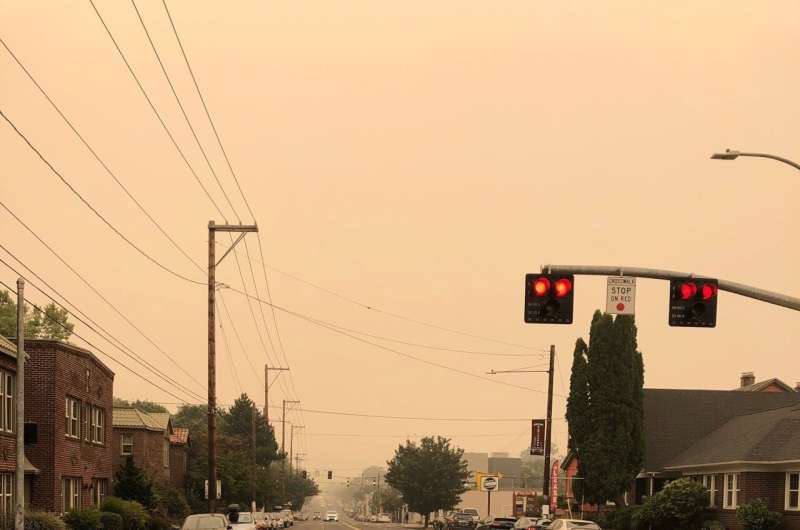
The dangers of inhaling smoke are well established. Many people do their best to avoid breathing it in. But what about when the smoke comes to you?
As wildfires burn in record numbers, their smoke can infiltrate homes, creeping through cracks and imperfect seals to find its way into our fragile lungs. That’s why buildings scientist Chrissi Antonopoulos, from the Department of Energy’s Pacific Northwest National Laboratory, is sharing the most up-to-date advice on how to protect you and your family from wildfire smoke when indoors.
Antonopoulos studied what protective measures improved air quality inside a 1920s home in Portland, Oregon, during September 2020, when multiple fires gave the city the unfortunate but temporary distinction of having the worst air quality among the world’s cities. Drawing from her team’s findings, Antonopoulos recommends the following:
Do what you can to limit the unhealthy outdoor air that makes its way inside your home. That means shutting doors, windows and any opening where outdoor air can enter. If you notice a crack, seal it. A towel stuffed beneath a door can do the trick, but properly installed weather stripping is best.
Turn off any ventilation systems that bring outdoor air inside and make sure central air conditioners are set to run in “recirculate mode.” Window conditioners directly pull outdoor air indoors. You’ll need to shut those off when possible, noting that they should remain on when outdoor temperatures increase the risk of extreme heat exposure.
Use appropriately sized portable air cleaners inside each room. A cleaner’s clean air delivery rate, or CADR, designates the amount of air that is “cleaned” in cubic feet per minute. A purifier fit for a studio will not sufficiently clean the air inside a three-bedroom home, for example.
Cleaners must be mechanical, said Antonopoulos, meaning air is pushed by a fan through a filter. Antonopoulos recommends using portable air cleaners that use HEPA (high-efficiency particulate air) filters, which can filter out the lion’s share of very tiny dust, pollen, mold, bacteria and other airborne particles.
Of chief concern is particulate matter: a mixture of tiny particles and moisture given off by wildfires, though particulate matter can come from power plants, cars and construction sites. Cooking, wood stoves, and burning incense or candles can also create particulate matter. Particulate matter is linked to disease in many groups—older adults with chronic heart or lung disease, children, and people with asthma are most vulnerable.
When measuring indoor air quality in Portland, Antonopoulos noted that properly sized portable air cleaners “dramatically reduced the particulate matter in homes during wildfires.” Additionally, increasing the filter in the central heating/cooling system to a high-capture MERV 11 (or better, MERV 13+) filter can help. MERV ratings describe how efficient a filter is, with higher numbers translating to more capture capability.
Clean or replace air filters every three months, as recommended by the manufacturer, or whenever they are visibly dirty. Please keep in mind that exposure to wildfire smoke can quickly dirty a filter, warranting more frequent cleanings or replacement.
If access to portable air cleaners, filters and weather stripping is limited, Antonopoulos recommends creating a “clean room.” That’s where you’ll shut all doors and windows, seal all entry points (consider putting a towel beneath your door), and filter air in whatever capacity you can. The Environmental Protection Agency notes that “people experiencing health effects from a smoky environment, even if indoors, may also benefit from using a tight-fitting respirator to reduce their exposure.”
Building your own air filter is also an option. A Corsi-Rosenthal Box, for example, consists of a box fan bound to multiple air filters (often with duct tape). Depending on the design of the box and ratings of the filters, this method can be used to reduce smoke exposure when indoors.
Any steps you take to seal your “building envelope” can also conserve energy, which helps reduce emissions in our warming climate.
Source: Read Full Article